 Follow the Stars Home by Diane C. McPhail
Follow the Stars Home by Diane C. McPhail Format: eARC
Source: supplied by publisher via Edelweiss
Formats available: hardcover, ebook, audiobook
Genres: historical fiction, U.S. history
Pages: 304
Published by Kensington on August 20, 2024
Purchasing Info: Author's Website, Publisher's Website, Amazon, Barnes & Noble, Kobo, Bookshop.org, Better World Books
Goodreads
A captivating reimagining of the intrepid woman who – 8 months pregnant and with a toddler in tow – braved violent earthquakes and treacherous waters on the first steamboat voyage to conquer the Mississippi River and redefine America.
The acclaimed author of The Seamstress of New Orleans brings to life Lydia Latrobe Roosevelt’s defiant journey of 1811 in this lush, evocative biographical novel for fans of Paula McLain, Gill Paul, Allison Pataki, and stories about extraordinary yet little-known female adventurers…
It’s a journey that most deem an insane impossibility. Yet on October 20th, 1811, Lydia Latrobe Roosevelt—daughter of one of the architects of the United States Capitol—fearlessly boards the steamship New Orleans in Pittsburgh. Eight months pregnant and with a toddler in tow, Lydia is fiercely independent despite her youth. She’s also accustomed to defying convention. Against her father’s wishes, she married his much older business colleague, inventor Nicholas Roosevelt—builder of the New Orleans—and spent her honeymoon on a primitive flatboat. But the stakes for this trip are infinitely higher.
If Nicholas’s untried steamboat reaches New Orleans, it will serve as a profitable packet ship between that city and Natchez, proving the power of steam as it travels up and down the Mississippi. Success in this venture would revolutionize travel and trade, open the west to expansion, and secure the Roosevelts’ future.
Lydia had used her own architectural training to design the flatboat’s interior, including a bedroom, sitting area, and fireplace. The steamship, however, dwarfs the canoes and flatboats on the river. And no amount of power or comfort could shield its passengers from risk. Lydia believes herself ready for all the dangers ahead—growing unrest among native people, disease or injury, and the turbulent Falls of the Ohio, a sixty-foot drop long believed impassable in such a large boat.
But there are other challenges in store, impossible to predict as Lydia boards that fall day. Challenges which—if survived—will haunt and transform her, as surely as the journey will alter the course of a nation . . .
My Review:
Lydia Latrobe Roosevelt clearly did not believe that adventures were things that happened to other people. Because she absolutely had her own adventures for her very own self, in spite of her gender, the times she lived in, the overwhelming number of naysayers, and that she was pregnant. On her second trip, she was, in fact, very, very pregnant.
Follow the Stars Home is a reimagining of her story, fictionalized so that it can be told from her perspective, as she accompanied her husband Nicholas Roosevelt on not one but two history making journeys from Pittsburgh to New Orleans, down the Ohio and Mississippi Rivers. On her first journey in 1809, she traveled by barge and by flatboat, finishing up in a rowboat after a series of mishaps and outright disasters.
That trip was merely a scouting mission for the trip yet to come, the one that we get to take with her in 1811. The first successful attempt to conquer the Mississippi River with steam power. If their journey was successful – and it was – steamboats plying the Ohio and Mississippi Rivers would change the face of the fledgling United States with the speed of passage both down and UP the rivers against the current, for both passengers and especially – and profitably – cargo.
But the Roosevelts have to succeed to make that future possible. This is the story of that fantastic journey through territory the U.S. had yet to claim, on the way to a Manifest Destiny – for good and ill – that the Founding Fathers could only imagine.
All they have to do is keep the boat, their finances and their marriage off the rocks.

Escape Rating B+: Follow the Stars Home is a story about being in the rooms where it happened – even if those rooms are powering down the Mississippi at the then astonishing rate of 12 miles per hour – and then steaming back up again.
Lydia Latrobe Roosevelt is the kind of unsung heroine whose accomplishments should have been shouted to the skies, but who is instead reduced to merely ‘Nicholas Roosevelt’s wife’ in the accounts of their history making journeys.
Instead, at least according to this fictionalized account – and it’s the version I WANT to believe in – she was as much of a full partner in this venture as the times and social conditions allowed – if not just a bit more. She’s certainly a real-life historical figure that it would be fascinating to know more about. Because she didn’t just marry into history, she was born to it. Her father, Benjamin Latrobe, was the architect of the U.S. Capital and many other buildings in the new capital of the newly formed United States.
A father who did not approve of his daughter’s marriage to his own friend and fellow engineer, a man more than 20 years her senior. (It’s not so much the age gap that gives this reader pause, but rather that they became engaged when Lydia was only 13.Your mileage and your judgment on that subject may definitely vary.)
The story in Follow the Stars Home is one that should be wider known, and I was certainly thrilled to learn about Lydia and her place on both epic journeys and in history.
That being said, her perspective on the events as they happen – at least her fictional perspective on her current situation, past experiences and her misgivings about them both – was a bit more domestically focused than I would have preferred. I was there for the adventure, the journey itself, and for the changes that happened after.
I fully recognize that’s a ‘me thing’ and may not be a ‘you thing’. In fact, I believe that a LOT of readers will be all in on that domestic perspective, because it was clearly damn difficult to manage a household, keep her toddler Rosetta occupied and more importantly out of trouble, AND give birth to her second child – at a scheduled stop in Louisville and NOT actually ON the steamboat – as history was being made.
I came to Follow the Stars Home for the history, but I stayed for this terrific portrait of a female adventurer who just plain isn’t as widely known as she ought to be. I sincerely hope that this marvelous story helps bring Lydia Latrobe Roosevelt to the more prominent place in the historical record where she truly belongs.

 Saving Susy Sweetchild (Silver Screen Historical Mystery #3) by
Saving Susy Sweetchild (Silver Screen Historical Mystery #3) by 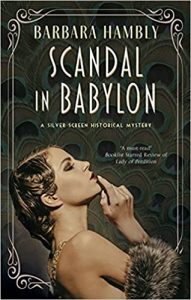 Because she sees entirely too much, and is all too aware that she can’t fix ANY of it. Although she certainly does what she can, as shown in the first two books in the
Because she sees entirely too much, and is all too aware that she can’t fix ANY of it. Although she certainly does what she can, as shown in the first two books in the 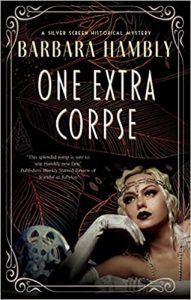 Escape Rating B: There are two stories going on in Saving Susy Sweetchild, and I have to admit that one interested me considerably more than the other.
Escape Rating B: There are two stories going on in Saving Susy Sweetchild, and I have to admit that one interested me considerably more than the other. The Ghost Cat by
The Ghost Cat by  Pivoting from my digression, I also have to say that I’m glad I read this AFTER the trip to Glasgow and not before – even though this is set in Edinburgh. There are a few things – like the ubiquitous presence of
Pivoting from my digression, I also have to say that I’m glad I read this AFTER the trip to Glasgow and not before – even though this is set in Edinburgh. There are a few things – like the ubiquitous presence of 
 Hell Bay (Barker & Llewelyn, #8) by
Hell Bay (Barker & Llewelyn, #8) by  In this eighth entry in the
In this eighth entry in the  And, as stated earlier, while we still don’t know as much as Thomas Llewelyn would like about Cyrus Barker’s background, he did observe a great deal about the relationship between his ‘Guv’ and Mrs. Ashleigh and it’s clear that she is going to be having, perhaps not exactly second thoughts but certainly some serious rethinking about that relationship and where she thinks its going vs. where Barker will ever be willing to go – and not just because I seriously doubt the man will EVER be willing to attend another country house party.
And, as stated earlier, while we still don’t know as much as Thomas Llewelyn would like about Cyrus Barker’s background, he did observe a great deal about the relationship between his ‘Guv’ and Mrs. Ashleigh and it’s clear that she is going to be having, perhaps not exactly second thoughts but certainly some serious rethinking about that relationship and where she thinks its going vs. where Barker will ever be willing to go – and not just because I seriously doubt the man will EVER be willing to attend another country house party. The Naturalist's Daughter by
The Naturalist's Daughter by 
 Escape Rating A-: Before I get to the story, I have to say that to this reader, at least, the original Australian cover (pictured at left) does a much better job of conveying the heart of this story – which lies in the land that gave birth to the platypus – than the US cover. Beauty may be in the eye of the beholder, etc., etc., etc., but the well-dressed somewhat generic figure on the US cover doesn’t ring true for either Rose or Tamsin – but the land and its creatures are definitely the heart of the thing.
Escape Rating A-: Before I get to the story, I have to say that to this reader, at least, the original Australian cover (pictured at left) does a much better job of conveying the heart of this story – which lies in the land that gave birth to the platypus – than the US cover. Beauty may be in the eye of the beholder, etc., etc., etc., but the well-dressed somewhat generic figure on the US cover doesn’t ring true for either Rose or Tamsin – but the land and its creatures are definitely the heart of the thing.
 Anatomy of Evil (Barker & Llewelyn, #7) by
Anatomy of Evil (Barker & Llewelyn, #7) by 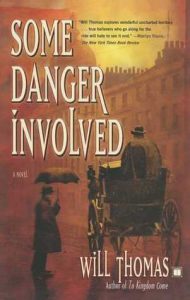 Private Inquiry Agents Cyrus Barker and Thomas Llewelyn have been on a collision course with this particular date with destiny since the very first book in this series,
Private Inquiry Agents Cyrus Barker and Thomas Llewelyn have been on a collision course with this particular date with destiny since the very first book in this series,  In the end, Barker gets his man – with Llewelyn’s able assistance – just as he always does. That the solution seems plausible even though justice can’t truly be served feels right, true to the circumstances, and even surprisingly satisfactory – in spite of the lack of historical closure.
In the end, Barker gets his man – with Llewelyn’s able assistance – just as he always does. That the solution seems plausible even though justice can’t truly be served feels right, true to the circumstances, and even surprisingly satisfactory – in spite of the lack of historical closure. A Vengeful King Rises (House of Croft) by
A Vengeful King Rises (House of Croft) by  The ‘King of Portman Square’ – at least when that powerful but unofficial title was held by his father or any of the Crofts who came before him, is a title of ill and dangerous repute. A repute that Adrian vowed to set aside after the death of his father.
The ‘King of Portman Square’ – at least when that powerful but unofficial title was held by his father or any of the Crofts who came before him, is a title of ill and dangerous repute. A repute that Adrian vowed to set aside after the death of his father. Escape Rating A: I picked this up because the author is one that I read whenever she has something new – and this book is very new indeed. Meaning that if you are expecting one of her signature frothy Regency romances you’re going to be surprised. A lot. And be utterly captivated and compelled.
Escape Rating A: I picked this up because the author is one that I read whenever she has something new – and this book is very new indeed. Meaning that if you are expecting one of her signature frothy Regency romances you’re going to be surprised. A lot. And be utterly captivated and compelled. Just as this case is a test for Adrian, it’s also a test for Samantha. Her government handlers expect her to obey orders and yet are forced to give her considerable autonomy in order to carry out her mission. And in that autonomy, and the training to think for herself that it requires, Samantha starts to see the truth about her circumstances and begins to wonder if Adrian Croft is even a quarter as bad as he’s painted.
Just as this case is a test for Adrian, it’s also a test for Samantha. Her government handlers expect her to obey orders and yet are forced to give her considerable autonomy in order to carry out her mission. And in that autonomy, and the training to think for herself that it requires, Samantha starts to see the truth about her circumstances and begins to wonder if Adrian Croft is even a quarter as bad as he’s painted.

 Lady Macbeth by
Lady Macbeth by 
 (If you’re wondering – as I was – it reminds me of
(If you’re wondering – as I was – it reminds me of  The Nightingale's Castle by
The Nightingale's Castle by 
 Murder at the White Palace (Sparks & Bainbridge, #6) by
Murder at the White Palace (Sparks & Bainbridge, #6) by 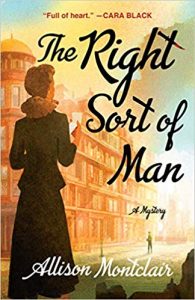 Over the course of the
Over the course of the 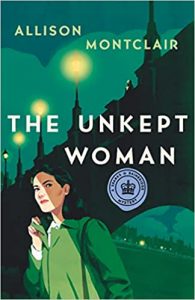 Escape Rating A+: I was up until 3 am finishing this, so an A+ it most definitely is. I tried telling myself I could finish AFTER breakfast, but myself wasn’t listening. I simply HAD to find out whodunnit!
Escape Rating A+: I was up until 3 am finishing this, so an A+ it most definitely is. I tried telling myself I could finish AFTER breakfast, but myself wasn’t listening. I simply HAD to find out whodunnit!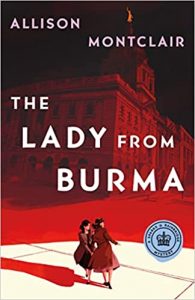 But the case itself isn’t so much about Archie as it is about Archie poking his nose in places that it doesn’t belong. It’s about the past – and not even Archie’s own. While Archie is fighting for his life in the hospital, and Iris Sparks is emotionally flailing about the potential loss of a future she wasn’t sure that she wanted until it was nearly snatched out of her hands – it’s up to Gwen Bainbridge to get to the bottom of the case that literally dropped on her head.
But the case itself isn’t so much about Archie as it is about Archie poking his nose in places that it doesn’t belong. It’s about the past – and not even Archie’s own. While Archie is fighting for his life in the hospital, and Iris Sparks is emotionally flailing about the potential loss of a future she wasn’t sure that she wanted until it was nearly snatched out of her hands – it’s up to Gwen Bainbridge to get to the bottom of the case that literally dropped on her head.